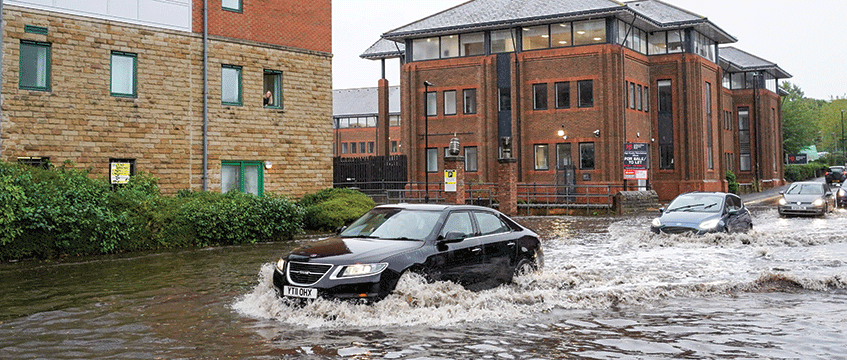According to the Met Office, UK climate change predictions show an increased chance of warmer, wetter winters and hotter, drier summers. Projections also highlight increases in the intensity of heavy summer rainfall events (with more surface water flooding) and more frequent heatwaves. This places an increasing focus on the resilience of the built environment to cope with future climate change, and the potential cost of climate change adaptation.
Assessing the impact of climate change as part of acquisition due diligence remains a developing area. Many clients have made public commitments to reach net zero and are actively investing to decarbonise their existing property portfolio. There is also an increasing focus on wider environmental, social and governance criteria, which includes consideration of the energy efficiency of buildings. So aside from the cost of upgrading properties, purchasers should consider the impact on their carbon footprint and ESG performance.
Regulatory landscape
There is also the regulatory position to consider. Under the Energy Efficiency (Private Rented Property) (England and Wales) Regulations 2015, the government set a minimum energy efficiency standard of EPC E for non-domestic private rented properties. That has applied since 1 April 2018 to properties let on new tenancies (including renewals) and will apply to all private rented properties from 1 April 2023 – even without a change in tenancy. The government has confirmed that MEES for non-domestic PRS will increase to a minimum EPC B requirement by 2030, which means that the current EPC rating (and estimated costs to upgrade to EPC B) should be a material consideration.
The government’s recent announcement of mandatory reporting of climate-related financial information for larger firms and financial institutions (aligned with the recommendation of the Task Force on Climate-Related Financial Disclosures) means there should be greater focus on climate risks as part of property acquisitions, both for the purchaser and any lender. This is likely to lead to a greater expectation for data and detail at the acquisition stage – with technical input required to assess climate risks and consider the costs of future compliance and adaptation works.
These more stringent EPC requirements may have the effect of accelerating asset obsolescence, as the market reflects the cost of meeting this compliance requirement in pricing, resulting in the so-called “brown discounts”.
Likewise, the increased disclosure requirements set out by the TCFD will institutionalise the management of climate risks and asset owners will be expected to take a more sophisticated account of long-term climate risks within their portfolios. These can be physical risks, such as flooding or extreme weather, or “transition risks”, such as changes to the market driven by occupier demand for decarbonised buildings.
What to consider
Today’s typical due diligence often does not go far enough. Lawyers will generally focus on regulatory compliance, but clients will increasingly need specialist technical support to review building performance and consider the embedded risks. The scope of any due diligence will depend on scale, but clients should consider the following areas:
- EPCs: Replies to Commercial Property Standard Enquiries include sections around the existence of EPCs, whether any exemptions have been registered and whether any EPCs have a rating below an E. Purchasers will want to know whether there are any units which do not have current EPCs or are otherwise substandard (ie below an E). Technical input and surveys may be needed to consider the implication of the rise in minimum standard to B by 2030, and the estimated capital investment required to achieve that.
- Flood and environmental risks: In most cases a desktop search will be carried out to identify the level of risk based on the location of the property and historic uses. Given the potential for more localised flooding due to extreme rainfall events (combined with exacerbating factors such as flat roofs, blocked drains and the lack of landscaped areas for drainage), searches based on the existing flood data may not adequately address future risk.
- Green leases: Many investors have their own standard “green clauses”, which lawyers are instructed to include in leases. On an acquisition, a purchaser may take some comfort if leases already contain green provisions, although these may not always match with the purchaser’s standard approach. It is also important to consider how they have been applied in practice, for example, whether the seller is able to provide historic data on energy use by tenants.
- Infrastructure: It is likely that more properties will have energy-related installations that require separate technical and legal due diligence. That includes measures like electric vehicle chargepoints, on-site renewable energy generation, heat network connections and private-wire electricity supply. These need to be identified early in a potential transaction, and specialist advice taken on the terms of any related contracts.
How ESG impacts commercial real estate is evolving rapidly, which will increasingly impact transactions and how asset owners manage the transition to the zero carbon economy.
Chris Paul is a partner in the energy and sustainability group at Trowers & Hamlins LLP and Nick Knight is head of valuation, UK & Ireland at CBRE








